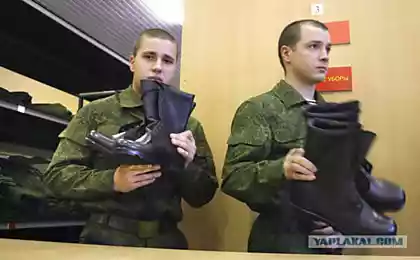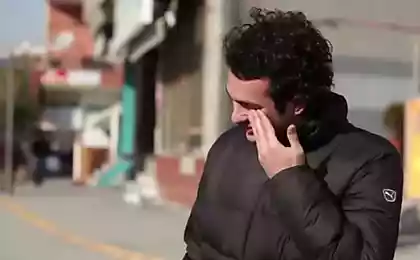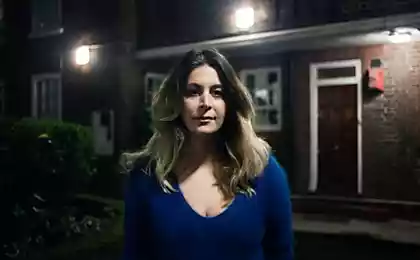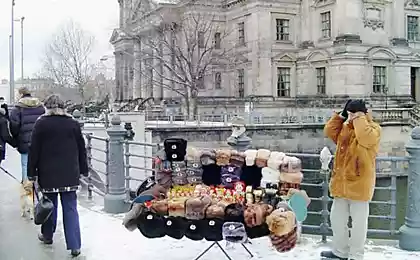1302
Interpretation of Russian gestures
Let's see where we go and what gestures national onioznachayut:
1. scratching your head.

Russian man scratches his head when something puzzled. The question is - why? Of course, it is unlikely to stimulate the blood circulation of the brain. One version says that this gesture came from folk magic: so our ancestors called for help ancestor, kind of genius.
2. tear chest shirt.

Probably it was originally improvised oath. There is a hypothesis that such an expressive gesture of our ancestors showed their belonging to the Orthodox faith, demonstrating the cross. In addition, it is known that when some executions and corporal punishment executioners tore punished at the top of his shirt. So, voluntary tearing of clothing as a persuasive argument was intended to show the person's willingness to climb on the block for the truth.
3. Throw the ground cap.

No less expressive gesture that articulated some desperate decision. Headdress (along with the beard) for Russian men symbolized the dignity, integrity in society. Public removing caps considered serious disgrace, a kind of civil death. Typically, this procedure were debtors. Voluntary throwing the hat on the ground demonstrated a willingness to go to the person most insane risk, where the price of failure could be the expulsion of the human society.
4. beat his chest.

This gesture is one of the versions come from the military tradition of the nomads, and has been listed on Russia Tatar-Mongols. So "steppe" to take an oath to his overlord. Punching in the chest in a gesture had to show devotion to a person.
5. "The Goat».

As a rule, this gesture is mistakenly associated with the criminal "raspaltsovkoy" or fans "metal».
In fact, "the goat" for thousands of years, and it has been associated with protection from black magic, evil spirits. Perhaps the older generation still remember the nursery rhyme "There is a horned goat for small children ..." when an adult show how butting goat, depicting goat horns using the little finger and the index finger of his right hand. In fact, it's not just a game with a child - thus our ancestors shot whammy with children.
In addition, the "goat" was accompanied by the performances of ancient Greek orators, this configuration means "instruction." From ancient rhetoricians gesture adopted Christian priests, who often accompanied his preaching was "goat". Curiously, some Orthodox icons, you can see the Savior and the saints with exposed forward the little finger and index finger.
6. fig.
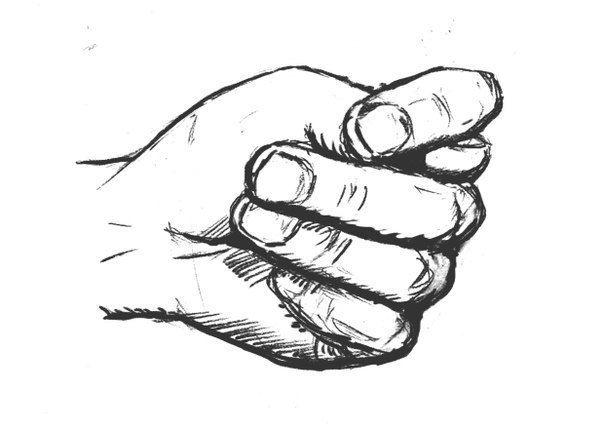
In general, this gesture is typical for many cultures. In Russia, on the FICO score is likely to have learned from visiting Germans are so vulgar gesture tried to seduce Russian ladies. There's even a version that "guys" came from the German expression «fick-fick machen» (so sounded traditional German invitation to intimacy). In the Russian tradition, a symbol of this gesture (perhaps due to the highly moral Russian women) was transformed into a symbol of a categorical refusal. And, over time, "guys" was used as a protective agent against evil forces: probably because of laxity of the German expats land equated to demons.
7. Click on the neck

This gesture of Russian drinking traditions articulated common in XIX - early XX century idiom "to lay the tie." The expression is born among the officers, and he came up with a colonel Rajewski, "talker and a joker." By the way, he "invented" and the other "the drinking 'phrase -" little podshefe »(chauffé). I wonder what this gesture had adopted speculators strong drinks during the "dry law" that Nicholas II was established in the Russian Empire in 1914.
1. scratching your head.

Russian man scratches his head when something puzzled. The question is - why? Of course, it is unlikely to stimulate the blood circulation of the brain. One version says that this gesture came from folk magic: so our ancestors called for help ancestor, kind of genius.
2. tear chest shirt.

Probably it was originally improvised oath. There is a hypothesis that such an expressive gesture of our ancestors showed their belonging to the Orthodox faith, demonstrating the cross. In addition, it is known that when some executions and corporal punishment executioners tore punished at the top of his shirt. So, voluntary tearing of clothing as a persuasive argument was intended to show the person's willingness to climb on the block for the truth.
3. Throw the ground cap.

No less expressive gesture that articulated some desperate decision. Headdress (along with the beard) for Russian men symbolized the dignity, integrity in society. Public removing caps considered serious disgrace, a kind of civil death. Typically, this procedure were debtors. Voluntary throwing the hat on the ground demonstrated a willingness to go to the person most insane risk, where the price of failure could be the expulsion of the human society.
4. beat his chest.

This gesture is one of the versions come from the military tradition of the nomads, and has been listed on Russia Tatar-Mongols. So "steppe" to take an oath to his overlord. Punching in the chest in a gesture had to show devotion to a person.
5. "The Goat».

As a rule, this gesture is mistakenly associated with the criminal "raspaltsovkoy" or fans "metal».
In fact, "the goat" for thousands of years, and it has been associated with protection from black magic, evil spirits. Perhaps the older generation still remember the nursery rhyme "There is a horned goat for small children ..." when an adult show how butting goat, depicting goat horns using the little finger and the index finger of his right hand. In fact, it's not just a game with a child - thus our ancestors shot whammy with children.
In addition, the "goat" was accompanied by the performances of ancient Greek orators, this configuration means "instruction." From ancient rhetoricians gesture adopted Christian priests, who often accompanied his preaching was "goat". Curiously, some Orthodox icons, you can see the Savior and the saints with exposed forward the little finger and index finger.
6. fig.

In general, this gesture is typical for many cultures. In Russia, on the FICO score is likely to have learned from visiting Germans are so vulgar gesture tried to seduce Russian ladies. There's even a version that "guys" came from the German expression «fick-fick machen» (so sounded traditional German invitation to intimacy). In the Russian tradition, a symbol of this gesture (perhaps due to the highly moral Russian women) was transformed into a symbol of a categorical refusal. And, over time, "guys" was used as a protective agent against evil forces: probably because of laxity of the German expats land equated to demons.
7. Click on the neck

This gesture of Russian drinking traditions articulated common in XIX - early XX century idiom "to lay the tie." The expression is born among the officers, and he came up with a colonel Rajewski, "talker and a joker." By the way, he "invented" and the other "the drinking 'phrase -" little podshefe »(chauffé). I wonder what this gesture had adopted speculators strong drinks during the "dry law" that Nicholas II was established in the Russian Empire in 1914.







